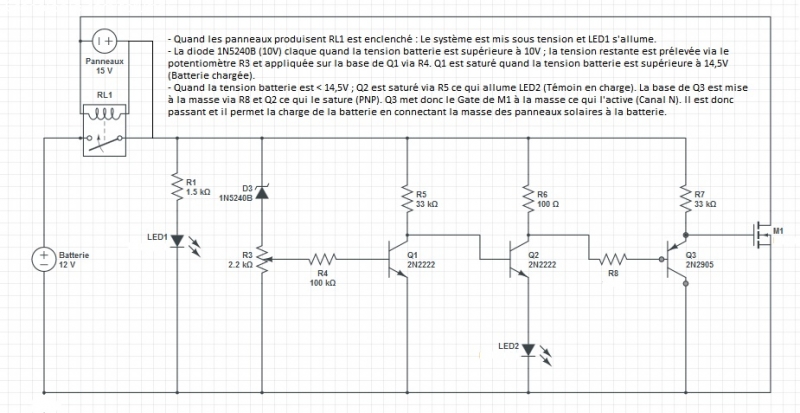I posted a message about a regulator for a wind turbine some time ago. I had a project to build a wind turbine with a permanent magnet generator to supply an autonomous chalet (hut) with electricity via batteries. I had counted on a wind turbine that could come out 15A, I went back down to earth for ~ 5A under 14V which makes us ~ 70W!
Currently I have 50W of solar panels (yes it is not much) with a so-called integrated regulator ... Except that the charge of the batteries exceeds 15V with strong sunshine! So I thought of creating a system that cuts the battery charge automatically when the voltage of 14.4V is reached. Here is the system I imagined and the explanations:

So side solar panels I will be OK with this assembly. By cons wind level I can also use this system but since my generator is permanent magnets, if the wind turns quickly I can easily climb to 50V. The batteries may not appreciate. I think that a switching regulation (Modification of the duty cycle?) Can be not bad. Yes, but how to do it? I would like to avoid, as much as possible, integrated circuits. After another constraint, the current: if too much is asked of the generator, the torque will increase and the wind turbine will stall. The system should therefore be limited in current.
Do you have any leads? Suggestions ? Other systems to offer?
Thank you for your help,
Good night,
Best regards.
Roman.

